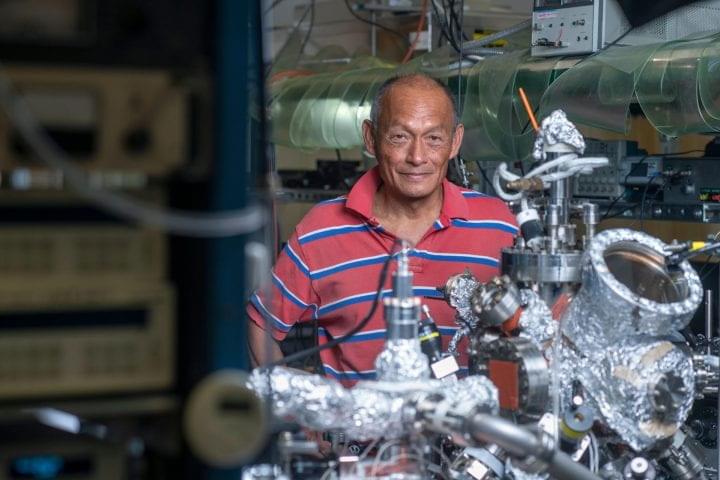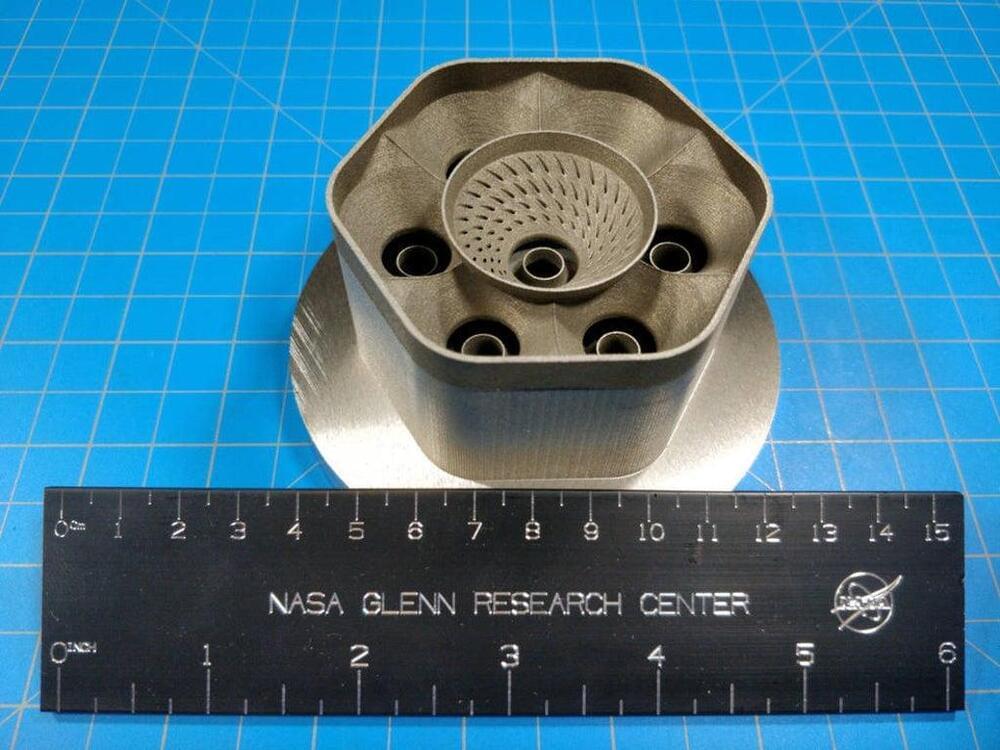Researchers have created one-way superconductivity, paving the way for superconductors to supersede semiconductors in electronics.


Engineers at MIT have developed an ultra-thin speaker that could be used to make entire surfaces produce sound. The unique design should be energy efficient and easy to produce at scale, the team says.
In a basic sense, speakers work by vibrating a membrane, which manipulates the air above it to produce sound waves. In speakers commonly found in audio systems or headphones, that’s done using electrical currents and magnetic fields.
But in recent years scientists have developed ways to achieve similar results in much slimmer devices. Thin film speakers work using piezoelectric materials, which vibrate in response to the application of a voltage. These have been used in phones and TVs, and even experimentally to create speakers out of things as unusual as flags.

Saturn’s moon Titan looks very much like Earth from space, with rivers, lakes, and seas filled by rain tumbling through a thick atmosphere. While these landscapes may look familiar, they are composed of materials that are undoubtedly different—liquid methane streams streak Titan’s icy surface and nitrogen winds build hydrocarbon sand dunes.
The presence of these materials—whose mechanical properties are vastly different from those of silicate-based substances that make up other known sedimentary bodies in our solar system—makes Titan’s landscape formation enigmatic. By identifying a process that would allow for hydrocarbon-based substances to form sand grains or bedrock depending on how often winds blow and streams flow, Stanford University geologist Mathieu Lapôtre and his colleagues have shown how Titan’s distinct dunes, plains, and labyrinth terrains could be formed.
Titan, which is a target for space exploration because of its potential habitability, is the only other body in our solar system known to have an Earth-like, seasonal liquid transport cycle today. The new model, published in Geophysical Research Letters April 25, shows how that seasonal cycle drives the movement of grains over the moon’s surface.


Researchers at the University of Freiburg have worked with colleagues at the University of California, Berkeley to come up with a novel means of rapidly 3D printing complex glass parts at a microscopic scale.
Known as ‘Microscale Computed Axial Lithography’ (Micro-CAL), this approach involves exposing resin to 2D light images of a desired shape from multiple angles, which when they overlap, trigger polymerization. When used to print the Glassomer material previously honed at Freiburg, the team say their layer-free process has the potential to unlock devices with new microfluidic or micro-optical functionality.
“For the first time, we were able to print glass with structures in the range of 50 micrometers in just a few minutes, which corresponds roughly to the thickness of a hair,” explains the University of Freiburg’s Dr. Frederik Kotz-Helmer. The ability to manufacture such components at high speed and with great geometric freedom will enable new functions and more cost-effective products in the future.”

NASA scientists have invented a new metal alloy that is 1,000 times more durable than current state-of-the-art materials used in aviation and space exploration.
The US space agency believes that Alloy GRX-810 could revolutionise space travel, as it can withstand far harsher conditions than existing materials used within rocket engines.
The material has twice the strength, three-and-a-half times the flexibility and more than 1,000 times the durability under stress at high temperatures.

A lush green wall and back-lit fibreglass panels are found on the exterior of an electrical substation extension that was designed by TEF Design to achieve net-zero energy consumption.
Owned by the utility company Pacific Gas and Electric, the Larkin Street Substation Expansion is located on a mid-block site in the city’s Tenderloin neighbourhood. It adjoins a concrete structure built in 1962 to supply power to the northeastern part of San Francisco.
For the constrained site, local firm TEF Design conceived a two-storey addition that totals 12,200 square feet (1,133 square metres). The extension rises 50 feet (15 metres) at its highest point.

How China can boost its carbon neutrality efforts by ensuring renewables account for more than 50% of the power supply for aluminium production by 2045.
Decarbonizing the power supply for primary aluminium is critical for the sector to reach net zero. Electricity used during aluminium smelting – the process of extracting the metal from its ore – accounts for more than 60% of the industry’s carbon emissions.
It is particularly important to control the carbon emissions of China’s production of primary aluminium, which comes directly from mined ore rather than using recycled or alloy materials. Primary aluminium produced and consumed in China accounts for approximately 60% of the global market. Due to the high proportion of coal-fired energy used, 12.7 tonnes of carbon is emitted per tonne of aluminium produced in China, versus a global average of 10.3 tonnes, according to the latest figures, which cover the 2005 to 2019 period. This is why decarbonizing the power supply for Chinese primary aluminium production is critical.
NASA’s Perseverance Mars rover used its Mastcam-Z camera system to shoot video of Phobos, one of Mars’ two moons, eclipsing the Sun. It’s the most zoomed-in, highest frame-rate observation of a Phobos solar eclipse ever taken from the Martian surface.
Several Mars rovers have observed Phobos crossing in front of the Sun over the past 18 years. Spirit and Opportunity made the first observations back in 2004; Curiosity in 2019 was the first to record video of the event. Each time these eclipses are observed, they allow scientists to measure subtle shifts in Phobos’ orbit over time. The moon’s tidal forces pull on the deep interior of the Red Planet, as well as its crust and mantle; studying how much Phobos shifts over time reveals something about how resistant the crust and mantle are, and thus what kinds of materials they’re made of.
The Mars 2020 Perseverance mission is part of NASA’s Moon to Mars exploration approach, which includes Artemis missions to the Moon that will help prepare for human exploration of the Red Planet.
Credit: NASA/JPL-Caltech/ASU/MSSS/SSI